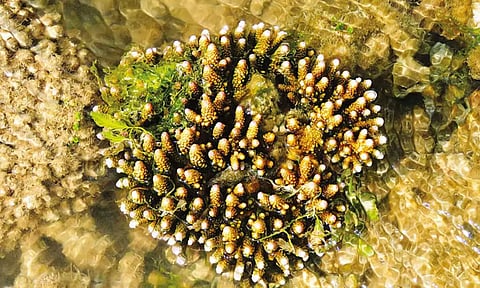

CHENNAI: With the islands in the Gulf of Mannar biosphere fast eroding, the State government has decided to restore some of them by installing artificial coral reefs. A similar project has already been implemented in one of the islands, successfully.
An official attached to the Environment department said the project will be undertaken as part of the Tamil Nadu Coastal Restoration Mission, which will be launched by the Environment and Climate Change Department.
“While the department has decided on restoration, the number of islands to be part of the project is yet to be finalised,” the official added.
Meanwhile, a committee constituted by the Principal Bench of the National Green Tribunal (NGT) reported that the analysis conducted around the islands from 2009 to 2019 indicated that the total percentage of erosion and accretion is about 42.81 per cent and 35.57 per cent respectively. Hence, the size, shape and location of these islands have changed considerably, the report said.
The Gulf of Mannar biosphere area has a chain of 21 islands running southwards from Rameswaram to Kanniyakumari. Of these, Vilangushuli and Puvarasanpatti have submerged due to illegal coral mining and direct attacks of waves.
On the other hand, Vaan Island, the southernmost of the islands, which was eroding and had split into two, had a different account on deployment of artificial reefs.
The Gulf of Mannar’s Vaan Island, spread over 20.08 hectares in 1969, split into two in 2013 and eroded significantly. However, after the State Environment Department deployed artificial reefs near the island in 2015, the situation changed.
An analysis conducted in 2022 revealed that the land area has increased up to 3.75 hectares from 2.33 hectares since the deployment of artificial reefs. “The morphological characteristics of sandy islands are very dynamic, and the fringing reef of corals along the windward side of the islands protect the islands from direct wave action,” NGT report said.
“The morphological variations of islands occur due to natural and anthropogenic stress. The natural agents include erosion, accretion, wave, current, sea level variation, neo-tectonic activity, and anthropogenic impacts such as the construction of breakwaters and discharge of effluents. These are the main causes of erosion and accretion in and around the island,” the report explained.
During the Budget session of the TN Assembly in March, the government announced the launch of the Tamil Nadu Coastal Restoration Mission’ to prevent sea erosion, reduce marine pollution and conserve marine biodiversity. The mission will be implemented with World Bank assistance at an estimated cost of Rs 2,000 crore.